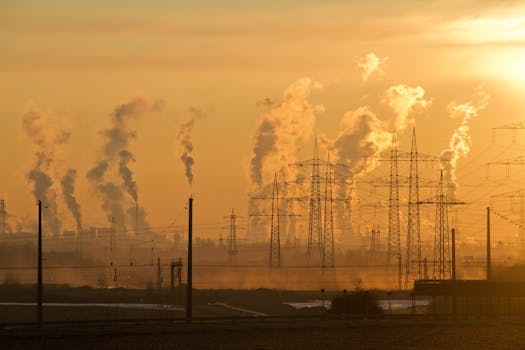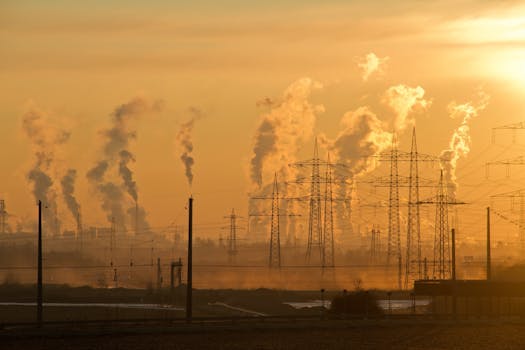Table of Contents
"Protect our planet, preserve our future."
Introduction
Climate refers to the long-term patterns of temperature, precipitation, humidity, wind, and other atmospheric conditions in a particular region. It plays a crucial role in shaping ecosystems, influencing agriculture, and impacting human societies around the world. Understanding climate patterns and changes is essential for addressing environmental challenges and developing sustainable solutions for the future.Importance of Renewable Energy Sources
Climate change is one of the most pressing issues facing our planet today. The burning of fossil fuels for energy production has led to an increase in greenhouse gas emissions, which in turn has caused global temperatures to rise. This rise in temperatures has resulted in a number of negative consequences, including more frequent and severe natural disasters, rising sea levels, and disruptions to ecosystems and wildlife. In order to combat climate change and reduce our reliance on fossil fuels, it is crucial that we transition to renewable energy sources. Renewable energy sources, such as solar, wind, and hydroelectric power, are sustainable and have a much lower environmental impact than traditional fossil fuels. By harnessing the power of these renewable resources, we can significantly reduce our carbon footprint and help mitigate the effects of climate change. One of the key benefits of renewable energy sources is their ability to reduce greenhouse gas emissions. Unlike fossil fuels, which release large amounts of carbon dioxide and other pollutants into the atmosphere when burned, renewable energy sources produce little to no emissions. This means that by switching to renewable energy, we can significantly decrease the amount of greenhouse gases being released into the atmosphere, helping to slow the rate of global warming. Another important benefit of renewable energy sources is their ability to create jobs and stimulate economic growth. The renewable energy industry is one of the fastest-growing sectors in the world, and as more countries invest in renewable energy infrastructure, the demand for skilled workers in this field continues to rise. This not only creates new job opportunities for individuals, but also helps to boost local economies and drive innovation in the renewable energy sector. In addition to reducing emissions and creating jobs, renewable energy sources also offer a number of other benefits. For example, renewable energy is abundant and widely available, making it a reliable source of power for communities around the world. Unlike fossil fuels, which are finite and subject to price fluctuations, renewable energy sources are sustainable and can be harnessed indefinitely. Furthermore, renewable energy sources are often more cost-effective in the long run than traditional fossil fuels. While the initial investment in renewable energy infrastructure may be higher, the operational costs of renewable energy sources are typically much lower than those of fossil fuels. This means that over time, switching to renewable energy can result in significant cost savings for both individuals and businesses. Overall, the importance of renewable energy sources in combating climate change cannot be overstated. By transitioning to renewable energy, we can reduce our carbon footprint, create new job opportunities, stimulate economic growth, and ensure a sustainable future for generations to come. It is imperative that we continue to invest in renewable energy infrastructure and support policies that promote the widespread adoption of renewable energy sources. Only by embracing renewable energy can we hope to mitigate the effects of climate change and create a cleaner, healthier planet for all.Strategies for Reducing Carbon Emissions

Climate change is one of the most pressing issues facing our planet today. The increase in greenhouse gas emissions, particularly carbon dioxide, has led to rising global temperatures, melting ice caps, and more frequent extreme weather events. In order to combat climate change and reduce the impact of carbon emissions on the environment, it is crucial that we implement strategies to lower our carbon footprint. One of the most effective ways to reduce carbon emissions is to transition to renewable energy sources. Fossil fuels, such as coal, oil, and natural gas, are major contributors to carbon dioxide emissions. By investing in renewable energy sources, such as solar, wind, and hydroelectric power, we can significantly decrease our reliance on fossil fuels and lower our carbon emissions. Transitioning to renewable energy not only helps combat climate change, but also creates jobs and stimulates economic growth in the clean energy sector. Another important strategy for reducing carbon emissions is to improve energy efficiency. Energy efficiency measures, such as upgrading to energy-efficient appliances, insulating buildings, and using public transportation, can help lower energy consumption and reduce carbon emissions. By using energy more efficiently, we can decrease our carbon footprint and save money on energy bills. Additionally, energy efficiency measures can improve air quality and public health by reducing pollution from power plants and vehicles. In addition to transitioning to renewable energy sources and improving energy efficiency, another key strategy for reducing carbon emissions is to promote sustainable transportation. The transportation sector is a major contributor to carbon emissions, particularly from cars, trucks, and airplanes. By investing in public transportation, walking and biking infrastructure, and electric vehicles, we can reduce our reliance on fossil fuels and lower our carbon footprint. Sustainable transportation not only helps combat climate change, but also reduces traffic congestion, improves air quality, and promotes public health. Furthermore, another effective strategy for reducing carbon emissions is to protect and restore forests. Forests play a crucial role in absorbing carbon dioxide from the atmosphere and storing it in trees and soil. Deforestation and forest degradation release carbon dioxide back into the atmosphere, contributing to climate change. By protecting existing forests and restoring degraded lands, we can help mitigate climate change and preserve biodiversity. Forest conservation also provides additional benefits, such as clean water, wildlife habitat, and sustainable livelihoods for local communities. In conclusion, reducing carbon emissions is essential for combating climate change and protecting the environment. By transitioning to renewable energy sources, improving energy efficiency, promoting sustainable transportation, and protecting forests, we can lower our carbon footprint and create a more sustainable future for generations to come. It is imperative that individuals, businesses, and governments work together to implement these strategies and take action to reduce carbon emissions. Together, we can make a positive impact on the planet and ensure a healthier, cleaner, and more sustainable world for all.
